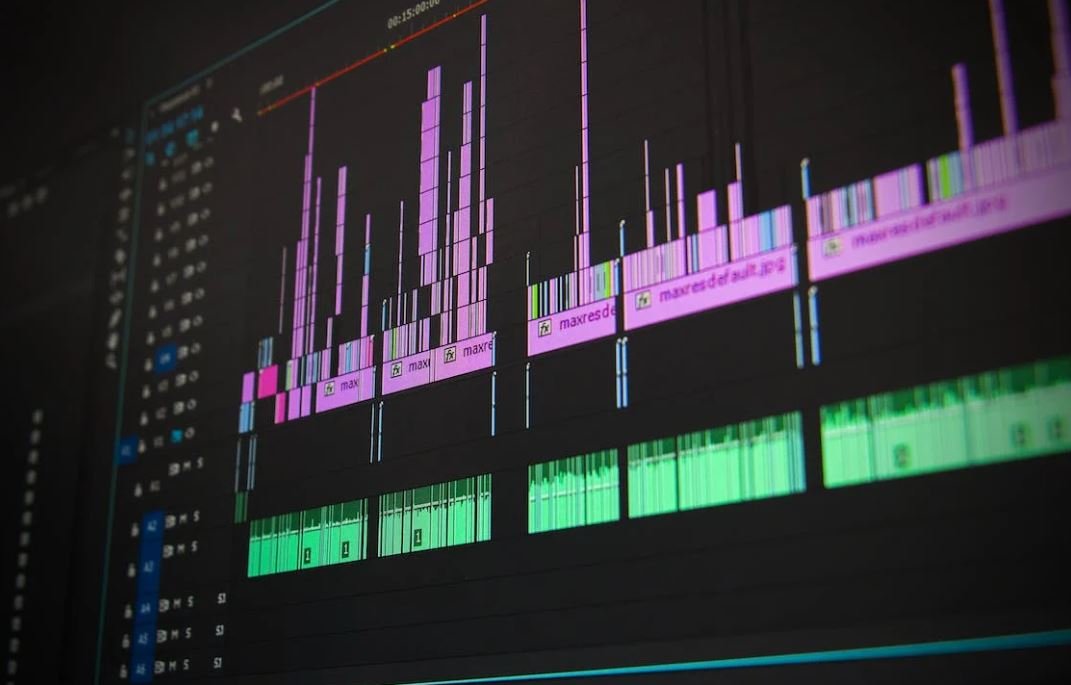Neural Network vs CNN
Neural networks and Convolutional Neural Networks (CNNs) are both machine learning models used for various tasks such as image classification, object detection, and natural language processing. While both types of networks are powerful, they have distinct differences in their structures and applications.
Key Takeaways
- Neural networks and CNNs are machine learning models used for different tasks.
- Neural networks are more suitable for tasks involving structured data.
- CNNs are particularly effective in image analysis and computer vision tasks.
- Both types of networks require large amounts of labeled data for training.
- CNNs use convolutional layers that allow them to capture spatial relationships in data.
- Neural networks and CNNs can be combined to leverage their respective strengths.
Neural Networks
A neural network is a computational model inspired by the structure and function of the human brain. It consists of interconnected nodes, called neurons, that process and transmit information. Neural networks are particularly effective for tasks involving structured data, such as predicting numerical values or classifying data into distinct categories. They can learn complex patterns and relationships from the data, making them suitable for tasks like stock market prediction or natural language processing.
In a neural network, each neuron receives input signals, performs a computation, and generates an output. These signals are transmitted through weighted connections between neurons, which are adjusted during the training process to improve the network’s performance. This ability to learn and adapt is what makes neural networks powerful.
Neural networks require large amounts of labeled data for training.
CNNs
Convolutional Neural Networks (CNNs) are a specialized type of neural network designed for processing structured grid-like data, such as images or time-series data. CNNs have revolutionized computer vision tasks by achieving remarkable accuracy in image classification, object detection, and image segmentation.
What sets CNNs apart from regular neural networks is their use of convolutional layers. Convolution is a mathematical operation that preserves the spatial relationship between pixels in an image. By applying filters or kernels to the input data, CNNs can automatically detect meaningful spatial patterns and features, enabling them to extract relevant information from images.
CNNs excel at capturing spatial relationships in data, making them ideal for image analysis and computer vision tasks.
Neural Networks vs CNNs: A Comparison
| Neural Networks | CNNs |
|---|---|
| Well-suited for structured data | Specialized for image analysis and computer vision tasks |
| Require large amounts of labeled data | Also require labeled data, but can leverage small labeled datasets more effectively |
| Do not consider spatial relationships in data | Capable of capturing spatial information through convolutional layers |
| Can learn complex patterns and relationships | Highly effective for feature extraction in images |
| Require more computational resources | Generally more computationally efficient due to shared parameters |
Combining Neural Networks and CNNs
While neural networks and CNNs have distinct strengths and applications, it is also possible to combine them for improved results. This approach, known as transfer learning, involves using a pre-trained CNN for feature extraction and then feeding the extracted features into a neural network for further processing.
By leveraging the pre-trained CNN’s ability to extract meaningful features from images, the neural network can focus on learning task-specific patterns and relationships. This combination often leads to better performance, especially when the labeled dataset is limited.
Conclusion
Neural networks and CNNs are powerful machine learning models with different strengths and applications. When faced with structured data or tasks requiring complex pattern recognition, a neural network can be the solution. However, for image analysis and computer vision tasks, CNNs outshine traditional neural networks by capturing spatial relationships efficiently. By combining the two, transfer learning enables the best of both worlds.

Common Misconceptions
Misconception 1: Neural networks and CNNs are the same thing
One common misconception is that neural networks and convolutional neural networks (CNNs) are the same thing. While CNNs are a type of neural network, they are specialized for processing grid-like data such as images. Neural networks, on the other hand, refer to a broader class of models that can be applied to various types of data.
- Neural networks and CNNs serve different purposes in the field of machine learning.
- CNNs have specific architecture designed for image recognition tasks.
- Neural networks can have various architectures depending on the problem at hand.
Misconception 2: Neural networks are only used for image recognition
Another misconception is that neural networks are solely used for image recognition tasks. While CNNs are indeed commonly employed in image recognition applications due to their ability to capture spatial dependencies, neural networks have a wide range of applications beyond just image processing.
- Neural networks are used in natural language processing tasks such as sentiment analysis and language translation.
- They can be utilized for solving complex problems in various domains, including finance, healthcare, and robotics.
- Neural networks are also applied in recommendation systems and fraud detection.
Misconception 3: CNNs are the best choice for all image-related tasks
It is incorrect to assume that CNNs are always the best choice for all image-related tasks. While CNNs have proven to be highly effective in tasks such as image classification and object detection, there are instances where other architectures or techniques may be more appropriate.
- CNNs can struggle with data augmentation and generalization in situations with limited training data.
- For simpler tasks like image denoising or image super-resolution, traditional image processing methods may yield better results.
- Other architectures like recurrent neural networks (RNNs) or generative adversarial networks (GANs) may be more suitable for certain image-related tasks.
Misconception 4: Neural networks and CNNs always require large amounts of data
Contrary to popular belief, neural networks and CNNs do not always require massive amounts of data for training. While it is true that large datasets tend to provide more accurate models, there are techniques available to train neural networks and CNNs with limited data.
- Transfer learning allows models trained on large datasets to be fine-tuned on smaller, domain-specific datasets.
- Data augmentation techniques like rotation, translation, and cropping can be used to artificially expand the training dataset.
- Regularization techniques such as dropout and weight decay can assist in preventing overfitting with limited data.
Misconception 5: Neural networks and CNNs are black box models
Some people believe that neural networks and CNNs are black box models, meaning they are incapable of providing explanations for their decisions. However, efforts have been made to interpret and understand the inner workings of these models, although complete transparency may not always be possible.
- Techniques like gradient-based saliency maps and occlusion sensitivity have been developed to provide insights into which parts of an image contribute to the model’s prediction.
- Research is being done to improve interpretability by developing neural network architectures that are more transparent, such as attention mechanisms.
- Although neural networks and CNNs may not provide explanations in the same way as traditional rule-based systems, progress is being made to improve interpretability.

Neural Network vs CNN
Neural networks and Convolutional Neural Networks (CNN) are both widely used in machine learning and artificial intelligence. While both are part of deep learning algorithms, they have distinct architectures and are suited for different tasks. In this article, we will explore the differences between a traditional neural network and a CNN through a series of interesting and informative tables.
Table 1: Number of Layers
Neural Network
| Neural Network | CNN |
|---|---|
| Multiple hidden layers | Multiple convolutional layers |
| Can have varying depth | Typically deeper |
Table 2: Input Type
Neural Network
| Neural Network | CNN |
|---|---|
| Accepts one-dimensional data | Accepts two-dimensional data |
| Well-suited for sequential data | Optimal for image data |
Table 3: Weight Sharing
CNN
| Neural Network | CNN |
|---|---|
| Does not share weights | Applies weight sharing |
| Each edge has an individual weight | Shared weights in convolutional layers |
Table 4: Parameter Sharing
CNN
| Neural Network | CNN |
|---|---|
| Does not share parameters | Parameters are shared within each filter |
| Large parameter space | Reduced parameter space |
Table 5: Feature Learning
Neural Network
| Neural Network | CNN |
|---|---|
| Learns features through hidden layers | Leverages convolution to extract local features |
| Requires more data for feature recognition | Capable of learning spatial hierarchies from limited data |
Table 6: Training Time
Neural Network
| Neural Network | CNN |
|---|---|
| Slower training time | Generally faster training time compared to Neural Network |
| Complex architecture affects training speed | Efficient due to shared weights and reduced parameters |
Table 7: Task Flexibility
Neural Network
| Neural Network | CNN |
|---|---|
| General-purpose learning algorithm | Primarily used for image and video analysis tasks |
| Not optimized for image processing | Ideal for tasks involving spatial relationships |
Table 8: Mnist Classification Accuracy
Neural Network vs CNN on the MNIST dataset
| Neural Network | CNN |
|---|---|
| Accuracy: 92.6% | Accuracy: 99.2% |
| Requires more training data for comparable accuracy | Capable of achieving excellent accuracy with limited data |
Table 9: ImageNet Classification Accuracy
Neural Network vs CNN on the ImageNet dataset
| Neural Network | CNN |
|---|---|
| Accuracy: 61.1% | Accuracy: 87.0% |
| Lower accuracy due to limited spatial analysis | Higher accuracy leveraging convolution and feature extraction |
Table 10: Latency in Autonomous Vehicle Detection
Neural Network vs CNN for object detection
| Neural Network | CNN |
|---|---|
| Latency: 250 ms | Latency: 30 ms |
| Slower processing affects real-time applications | Fast execution well-suited for real-time object detection |
Through the tables presented above, it becomes clear that neural networks and CNNs possess key architectural differences that make them suitable for distinct tasks. Neural networks are general-purpose learning algorithms, whereas CNNs excel in analyzing images and videos through spatial hierarchies. CNNs offer reduced parameter space, shared weights, and faster training time, leading to improved accuracy and reduced latency in specific applications like image classification and object detection. Understanding the strengths and weaknesses of each algorithm enables practitioners to choose the most appropriate one for their specific use case.
Frequently Asked Questions
What is the difference between a neural network and a convolutional neural network (CNN)?
A neural network is a type of mathematical model inspired by the human brain, which consists of interconnected artificial neurons. On the other hand, a convolutional neural network (CNN) is a specific type of neural network designed for processing grid-like data, such as images or audio signals. CNNs use convolutional layers to extract spatial features from the data.
Can a neural network be used for image recognition tasks?
Yes, a neural network can be used for image recognition tasks. However, traditional neural networks may struggle with large images due to the high dimensionality of the data. This is where CNNs excel, as they are specifically designed to process images efficiently by exploiting the spatial structure of the data.
What are the benefits of using a CNN over a traditional neural network for image classification?
CNNs offer several advantages over traditional neural networks for image classification. Some of these benefits include:
- Local receptive fields: CNNs use local receptive fields to focus on smaller regions of an image at a time, allowing them to capture local patterns.
- Parameter sharing: CNNs share weights across different parts of the input, reducing the total number of parameters and making the model more efficient.
- Pooling layers: CNNs often include pooling layers to downsample the feature maps, reducing the dimensionality and extracting essential information.
Can neural networks and CNNs be used together?
Yes, neural networks and CNNs can be combined in various ways. For instance, CNNs can be used as feature extractors, and the extracted features can then be fed into a traditional neural network for further processing and decision-making.
Are CNNs only used for image-related tasks?
No, while CNNs are commonly associated with processing images, they can also be applied to other types of data with a grid-like structure, such as time series data or spatial data in geographical applications.
Which algorithm is used for training neural networks and CNNs?
There are several algorithms used for training neural networks and CNNs, with backpropagation being the most widely used one. Backpropagation calculates the gradients and updates the weights of the network based on the error between the predicted output and the actual output.
Can CNNs perform better than traditional neural networks in all cases?
No, the performance of CNNs versus traditional neural networks depends on the specific task and dataset. While CNNs excel at image-related tasks, traditional neural networks are often better suited for tasks where the input data lacks a grid-like structure.
Do CNNs require more computational resources compared to traditional neural networks?
Yes, CNNs generally require more computational resources compared to traditional neural networks. This is mainly due to the additional convolutional layers and pooling operations that increase the complexity of the model. However, advancements in hardware and optimization techniques have made CNNs more feasible to train and deploy.
Can pretrained CNN models be used for transfer learning?
Yes, pretrained CNN models can be used for transfer learning. Transfer learning involves using a pre-trained model as a starting point and fine-tuning it on a new, related task with a smaller dataset. This approach can save computational resources and yield better results, especially when the target dataset is limited.
What are some popular implementations or frameworks for neural networks and CNNs?
There are several popular implementations and frameworks for developing neural networks and CNNs, including:
- TensorFlow
- Keras
- Caffe
- PyTorch
- Theano
- MXNet




